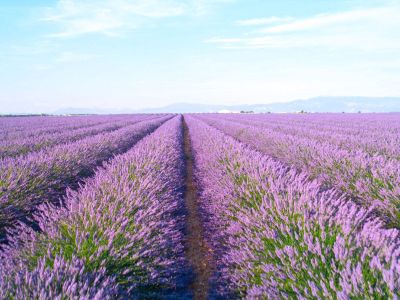How do you go about growing a field of lavender? The following information explains more.
Growing Conditions for Lavender Farming
Lavender grows in Mediterranean climates where summers are warm and dry and winters are cool and mild. Don’t be discouraged if your climate isn’t ideal; some of America’s loveliest lavender farms are located in the rainy Pacific Northwest and the chilly Midwest. Some hardy lavenders tolerate winters as far north as USDA plant hardiness zones 5 or 6, but plants don’t do well in punishing cold winters with lots of snow. However, plants can be protected in various ways, like using row covers, wind barriers, or heavy mulch. Soil for lavender farming should be well-drained and not too rich. Sandy soil works well, but lavender may not survive in clay. You may need to amend heavy or poorly drained soil with large amounts of mulch, gravel, sand, or compost. Proper spacing is also essential, especially in damp or humid climates. Growers recommend a distance of at least 2 to 3 feet (61-91.5 cm.) between plants and 3 to 6 feet (1-2 m.) between rows. Lavender also does well in raised beds.
How to Start a Lavender Farm
Planting lavender seeds is risky and time-consuming and generally aren’t true to type, meaning they may not produce the desired variety. If you’re planting a small area, you can start transplants from a nursery. Most growers will start cuttings or root divisions in order to retain the desirable traits. A reputable nursery will carry reliable plants that are appropriate for your area. It is usually recommended that you try planting small, trial areas first to determine what works best in your situation. Your local cooperative extension can also advise you.
Lavender Types for Planting
English lavender (Lavandula augustifolia): A popular, widely grown lavender species. The fragrant plants are commonly used for oils, perfumes, flavoring, and dried flowers. English lavender is suitable for growing in USDA zones 5b through 8, where summers are warm and days are long.
Spike lavender (Lavandula latifolia): Primarily grown for its essential oils and used to make fragrant soaps. It is also popular for florals. However, spike lavender (also known as Portuguese lavender) needs a Mediterranean climate and isn’t practical for many areas of the U.S.
French lavender (Lavandula dentata): An extremely fragrant lavender that grows in warm climates. French lavender is grown as an annual in many areas of the United States.
Lavandin (Lavandula x intermedia): Also known as Dutch lavender, lavandin is a hybrid of English and spike lavender. It produces a high yield of flowers and oil, although the oil may not be of the highest quality.
Spanish lavender (Lavandula stoechas): Produces dark purple blooms that are often used for dried flower arrangements. Spanish lavender plants aren’t cold hardy and are often grown as annuals for ornamental purposes.
